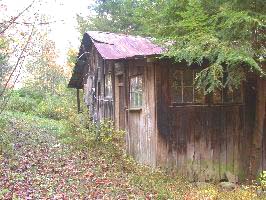
We often admire the beautiful old mountain cabins that are found in out of the way places. This one was built in a community that is now abandoned west of Robbinsville, North Carolina. How could this house still be standing after being abandoned for over 50 years? Its builder knew some important principles of home design that have been forgotten by many today. The home was built in harmony with its environment. The materials were carefully selected to be durable, but were locally produced and affordable. We can learn some lessons from this uneducated builder that can help us build better mountain homes today.
* How to design for your property.
* How to design for your budget.
* How to design for your lifestyle.
What is so important about designing a home to fit your mountain property?
Let's use an illustration. Have you ever owned a Cadillac?
These cars were designed to give the riders comfort and style.
Would you buy a Cadillac, remove the trunk lid, and use it to haul building materials?
Why not? Because luxury cars were not designed for that purpose.
But many mountain homes have a similar problem. They were designed for a flat subdivision lot in the suburbs.
Sure, the house looks beautiful in the magazine.
Perhaps they thought they were saving money on cheap house plans.
But, how much more was spent excavating their lot and building all those retaining walls
to squeeze that house on their steep property?
Fighting the environment in this way is an expensive war that has scarred our mountains.
But the mountains will always win. Far too many homes have foundations that shift and settle.
Their expensive retaining walls sag and crack from intense soil pressure.
Steep dirt banks are unsightly and often wash out.
Many problems can be avoided by building in cooperation with the mountains.
Have your home designed to fit your property.
By careful planning, excavation work can be greatly reduced.
Saving more trees will prevent soil erosion.
By making the floor levels match the ground level, the home can have patios with easy access to the yard.
In a longer, narrower home, more of the rooms will face a view.
Everyone has limits on what they can or want to spend.
What is your budget?
You need enough to pay for the property, the design fee, site excavation work,
the construction of your home, utilities, and landscaping.
Your designer can help you with this.
In the first meeting with my clients, I like to discuss their needs and their budget.
Next we discuss if their budget allows what they want and need.
Then we usually discuss how we can fit their wants in needs into their budget.
It is important to discuss this before I begin their plans.
It would be disheartening to have a set of plans designed for your dream house,
and then find out you cannot afford to build it.
There are many ways to adjust a home to reduce costs.
I start by trying to plan smaller.
The home could be more carefully designed to reduce wasted space.
Rooms could be designed to fit more closely to the furniture that will be used.
Costs can also be reduced by simplifying the structure of the house.
By altering the plan, site work could be reduced too.
If a basement with windows can be planned, some of the living area could be moved to that level.
Making the house more energy efficient will also make it more affordable.
The last option would be to build with less expensive materials and furnishings.
To reduce construction costs start with separating your wants from your needs.
By discussing this with your designer he can plan an affordable mountain home for you.
Your home should also be designed to fit your needs.
There is no way a mail order plan can be designed for your way of living.
We all live differently.
This includes our unique families, individual health concerns, storage needs, home work space, tastes in decorating, our hobbies, and how we entertain.
On the other hand, mail order plans consider average needs and wants of average people on average building sites.
If your home is designed to satisfy your specific needs, more of these needs can be satisfied without breaking the budget.
It is also important that your home be designed for the disabled.
Our mountains are a favorite retirement destination. Every home should be designed for this.
A person with a wheelchair or a walker should be able to get from the car to the living room,
kitchen, dining, a bedroom, and bathroom without barriers like stairways and narrow doors.
Most of my remodeling projects were begun because these barriers needed to be removed.
Some of my clients were dealing with back problems, diabetes issues, and another had to use a wheelchair.
How much better to design for this from the beginning!
Many homes in the mountains have very steep driveways making access difficult, especially when there is snow and ice.
To save space they often have basement garages with no parking on the main level.
Is it safe for retired people to carry groceries up ice covered steps?
There are better ways to design mountain homes.
My hope is that people will plan more carefully before they build,
that they can build homes that are affordable, better, more energy efficient, and are an asset to our beautiful mountains.
Remember you can't fight the mountains. They are bigger than us. They will win.
I hope this information leads you to a better mountain home.
If you have any questions, ideas, or would like more information, feel free to contact the author.
How to Contact The Mountain Home Show
Appreciation......
This web site contains information obtained from various sources.
The Mountain Home Show is not liable for the accuracy of this information.
Please contact the source of this information with your questions.
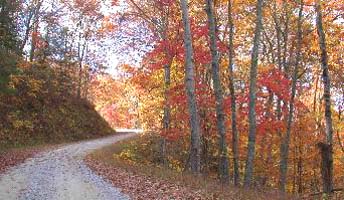
* How to design for your property.
During the last twenty years, a lot of homes have been built in the mountains.
But many of these homes could have been built better and for less money.
Perhaps its not too late for you to have a home that is better designed to fit your property and your needs,
while saving substantial cost.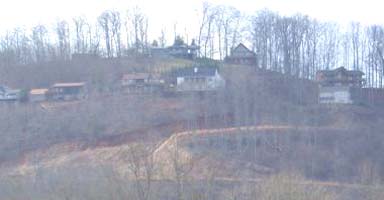
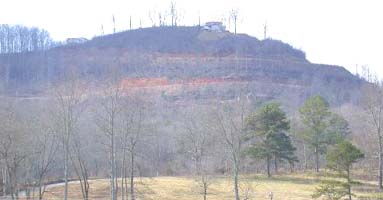
They should have planned their home to fit into its environment.
Instead, they tried to change their environment to fit their house plan.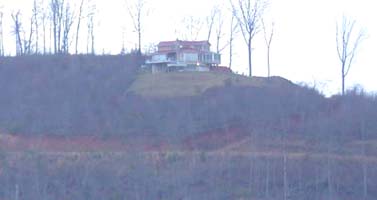
How can this be done? By having your designer inspect your property.
A good design will consider the direction of the view, where the sun will be shining when it is cold and when it is hot,
how steep your property is, driving access, utilities, and which trees you want saved.
Then your home will cost much less to build and maintain, and reduce your energy costs.
You will be far more happy with the results.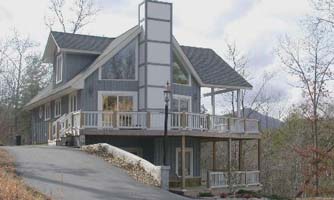
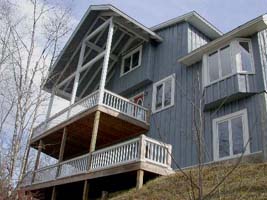
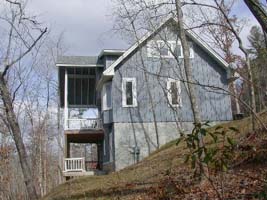
This home was designed for this property.
By calculating the slope of the hill, the house could be planned with the correct width
so that each level has a comfortable access to the ground level.
By making the home narrower and longer, more of the rooms have a view.
* How to design for your budget.
* How to design for your lifestyle.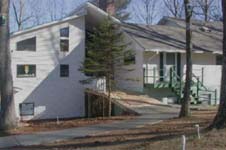
This home was remodeled to add a wheelchair access to the main level.
Richard C. MacCrea
How to Contact Richard C. MacCrea
 My Facebook Page
My Facebook Page
(Design news and ideas)
Email Me
(Opens an email window)
800.738.8781 P.O. Box 446, Murphy, North Carolina 28906
Other Pages on this Web Site
 The Mountain Home Show, Home Page and Site Map
The Mountain Home Show, Home Page and Site Map
(How to find what you're looking for)
The Next Mountain Home Show Program
(For guests and exhibitors)
How to Get in The Mountain Home Show
(For exhibitors)
Articles
(About designing, building and remodeling a mountain home)
The Mountain Model Home
(A home that experiments with extreme energy efficiency)
The Mountain Model Cabin
(A cabin that experiments with small size and energy efficiency)
Construction Diary
(The joys and frustrations of building these two model homes)
Home Designing and Planning
(How to get plans for building or remodeling your home)
 Email Us
Email Us
(Opens an email window)
Like our Facebook Page
(Join our Mountain Home Show Community for news and contacts)
The Mountain Home Show, P.O. Box 446, Murphy, North Carolina 28906-0446
The Mountain Home Show owes its success to the businesses that participate in the show.
They arrange such wonderful exhibits.
It is obvious that they take great pride in their work and our show.